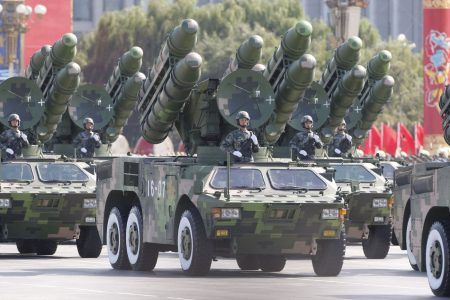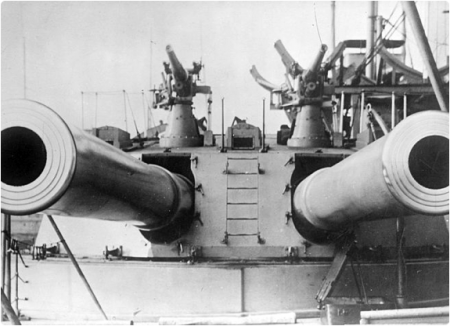
February 22, 2018 – When President Donald Trump proposed that the United States military prepare to parade in force down Pennsylvania Avenue in the near future, it was a flashback to a world a century ago when democracies and authoritarian states all liked to show off their men in uniform and the machines they operated. The British liked to do sail passes showing the strength of their fleet. The Germans marched their armies through the streets of Berlin. And the French did what Trump witnessed on Bastille Day, an annual rite of passage for that nation.

With the exception of the French, today it is authoritarian regimes that demonstrate their military muscle annually or more frequently, whether it be Russia, China, or North Korea. But more than a century past in the run-up to World War One, the Great Powers all liked to strut their stuff, showing off their military prowess. It reminds you of the war of tweets between President Trump and North Korea’s Kim Jong-un with the former declaring his nuclear button is bigger than the one on the latter’s desk.
What’s so troubling about Trump’s request to have the American military parade down Pennsylvania Avenue?
It comes at a time when regional conflicts across the globe are becoming more heated with the United States, and Russia picking sides, and occasionally China adding its two cents. Regional powers are also picking sides in places like Yemen, Syria, and Libya where the schism within Islam between Shia and Sunni believers is perpetuated by state actors like Iran and Saudi Arabia. Even here China, the United States, and Russia play active or behind-the-scenes roles in the conflicts.
The latest American budget jacks up military spending to extraordinary new heights. The already most powerful military force on the planet intends to spend more than $639 billion this year to further escalate development and the purchase of new armaments. The rationale for the more than $50 billion increase is the concern that the United States may be falling behind its global rivals, Russia and China, in armaments.
The last time the world saw an arms race was in the 1980s when Ronald Reagan was president. He spiked the budgets to outspend the Russians to the point that the latter ended up almost bankrupting their country. Russia’s communist regime subsequently collapsed after being mired in an Afghan war for a decade, and in its own efforts to continue to assert its global presence. At the time political pundits described the end of the global rivalry between communist Russia and the United States as the end of history itself.
But history teaches us that an arms race doesn’t always end well.
The Great Powers of Europe squared off in the late 19th century by making massive investments in their military procurement as well as in the expansion of their armies and navies leading to World War One. The United Kingdom answered Germany’s efforts to build a rival to the Royal Navy by launching the Dreadnought series of armoured, big-gun warships. The millions of dollars spent annually in the tit-for-tat British-German rivalry left both countries armed to the teeth. In the early 20th century regional conflicts erupted in which the two sides backed rival claims. In each case, diplomacy saved the situation from becoming a military tete-a-tete. But eventually smaller state actors drove the agenda that launched the two countries and their allies into a global war.

How different are the conditions that led to World War One from those we see today?
The biggest difference is lethality. A competition among Russia, China, and the United States for global dominance has the potential to produce a nuclear holocaust. President Trump has speculated about nuclear weapons, wondering why the United States has them if they are not willing to use them. Ballistic missiles armed with nuclear warheads can reach almost everywhere on the planet within an hour. Leaders in Russia, China, and the United States, carry launch codes with them everywhere they go. And other countries have nuclear weapons that could trigger a series of escalations similar to what happened in Bosnia-Herzegovina in 1914, drawing Serbia, and Austria into a confrontation, followed by all the Great and Lesser Powers picking sides.
Among the most dangerous new developments in military technology are the following
- armed drones
- tactical low-yield nuclear weapons
- battlefield robots on land, sea, and air
- ballistic missile defense systems
- space-based weapon systems
- cyberweapon systems
The United States as of 2017 spent more on its military than the combination of the following countries:
- China
- Russia
- Saudi Arabia
- India
- France
- United Kingdom
- Japan
- Germany
Apparently, in an “America First” world, that kind of military spending is not enough.
And although the focus of America’s military spending more recently has shifted to combatting terrorism from non-state-actors, and cyber threats, the pivot to a great power global arms race is now in the offing with weapons and soldiers on display on Pennsylvania Avenue for the entire world to see.
It has been said that those who ignore history or bound to repeat it. Enough said.











